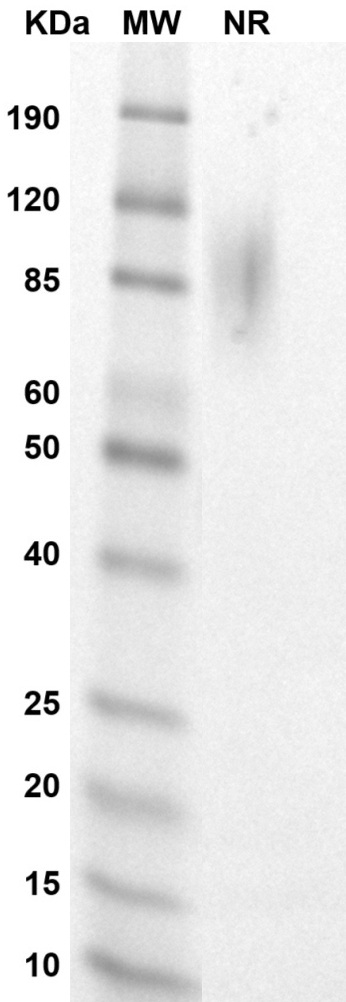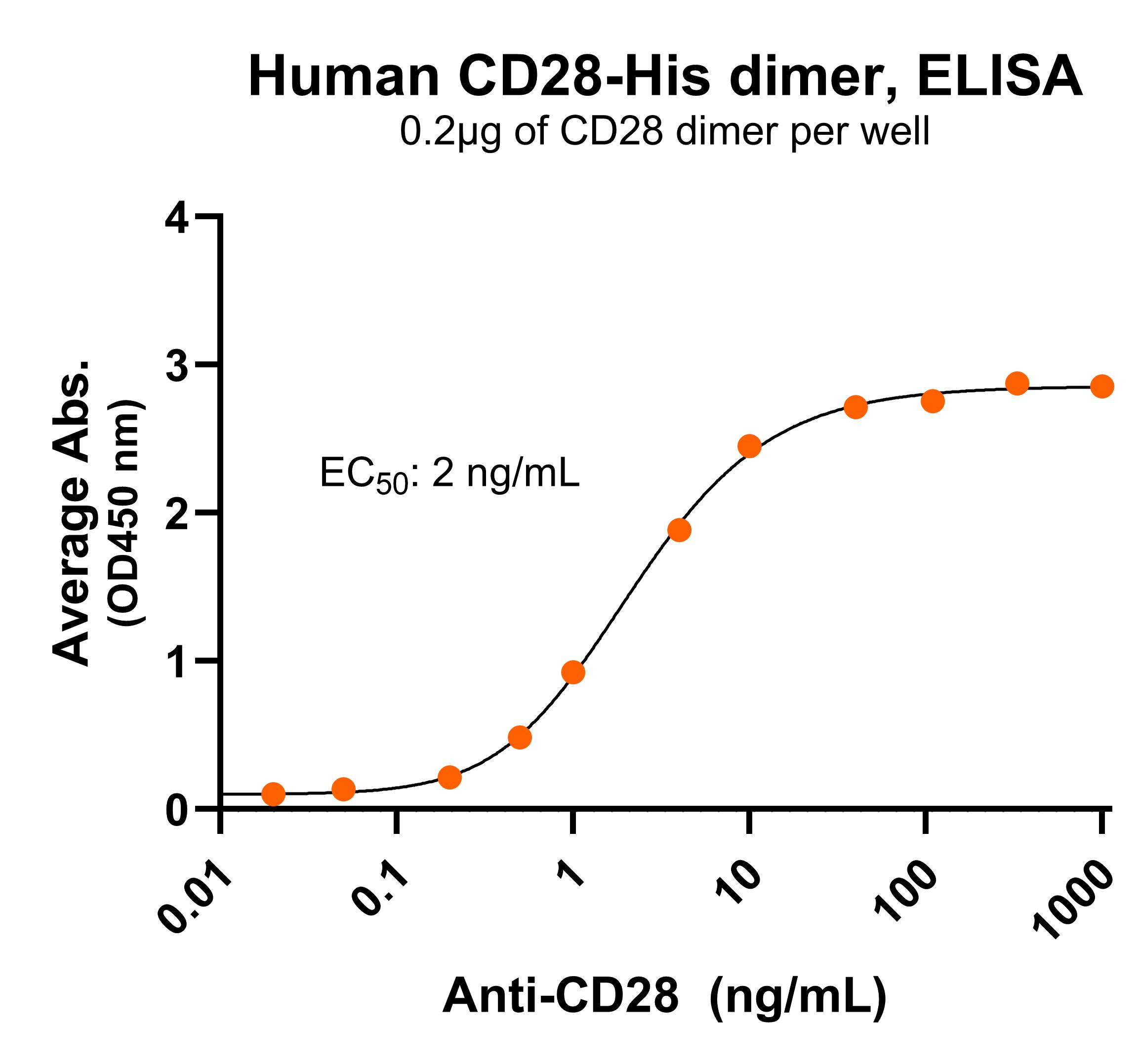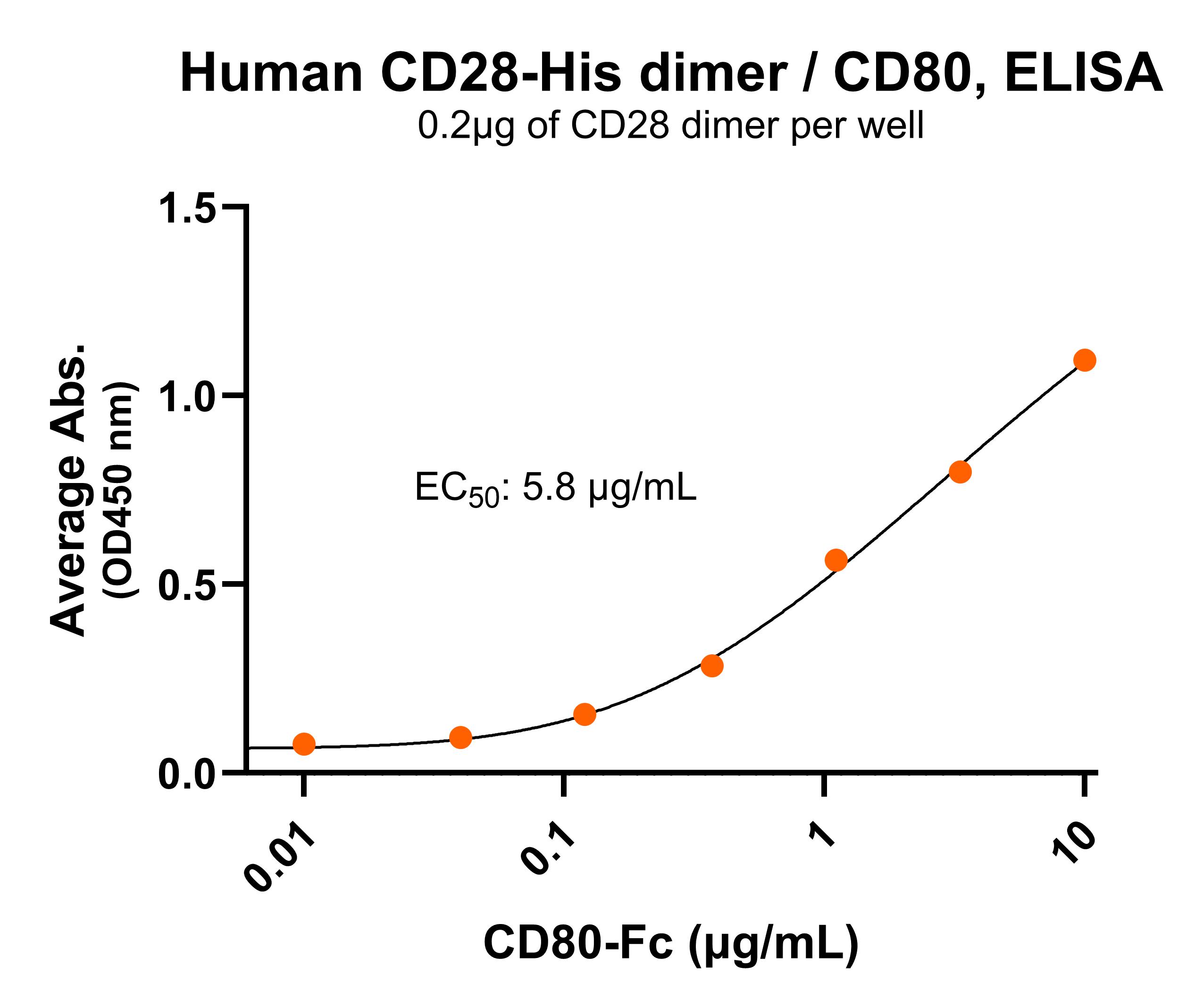 MW: Molecular Weight marker reduced condition
NR: CD28 dimer under non-reducing condition
MW: Molecular Weight marker reduced condition
NR: CD28 dimer under non-reducing condition Immobilized human CD28 dimer protein
Immobilized human CD28 dimer protein His Tag (Cat. No. CSP-24032) at 2 ��g/mL (100 μL/well) can bind anti-human CD28 monoclonal antibody
His Tag (Cat. No. CSP-24032) at 2 ��g/mL (100 μL/well) can bind anti-human CD28 monoclonal antibodyFor Research Use Only (RUO)